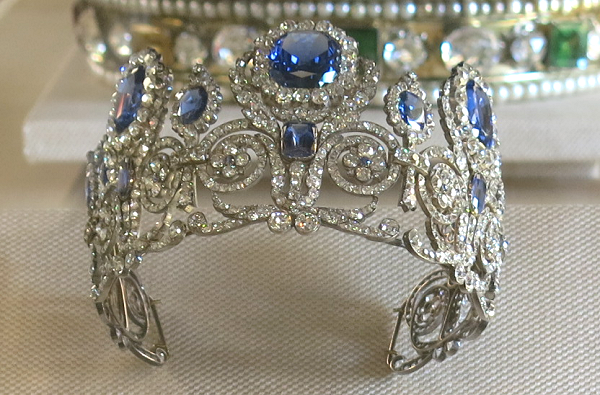 |
| Queen Marie-Amelie’s Diamond and Sapphire Tiara, on display at the Louvre (Wikimedia Commons) |
France hasn’t been ruled by a king or an emperor for over a century, but there’s still a huge interest in the royal jewels worn by the former reigning families of the nation. Today, we’re looking at one of the grandest sets on display today: the sapphires that belonged to Queen Marie-Amelie.
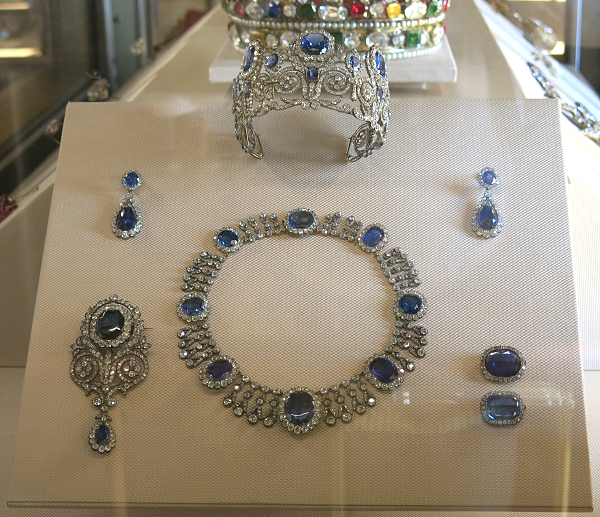 |
| Queen Marie-Amelie’s Diamond and Sapphire Parure, on display at the Louvre (Wikimedia Commons) |
The suite, which includes a tiara, a necklace, a pair of earrings, a large brooch, and a pair of smaller cluster brooches, is on display with other pieces from the crown jewel collection in the Apollo Gallery at the Louvre Museum in Paris.
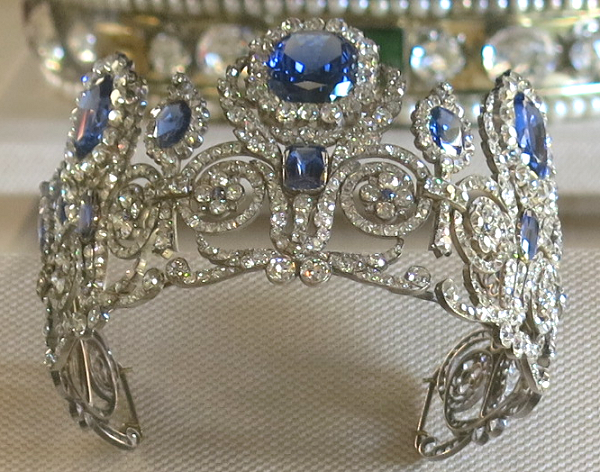 |
| Queen Marie-Amelie’s Diamond and Sapphire Tiara, on display at the Louvre (Wikimedia Commons) |
The tiara is made of five distinct diamond and sapphire elements, each featuring a large sapphire and diamond cluster flanked by diamond-set wings and set atop another sapphire and a pair of diamond scrolls with floral centers. The elements are joined by smaller sapphire and diamond clusters. The entire tiara can be taken apart, and the separate elements can be worn as brooches. (As you’ll see below, that’s how the piece was originally made — by combining brooches together to form a tiara.)
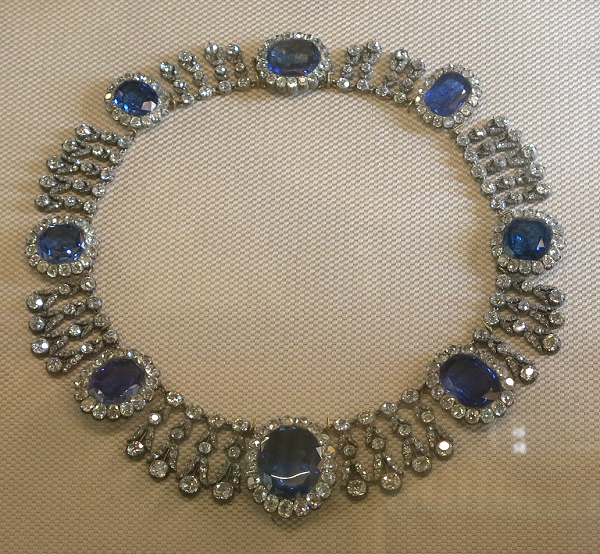 |
| Queen Marie-Amelie’s Diamond and Sapphire Necklace, on display at the Louvre (Wikimedia Commons) |
The set’s distinctive necklace features eight large sapphire and diamond clusters with diamond floral fringe pieces set in between them. The setting of the fringes gives the necklace incredibly flexibility, allowing it to conform to the body of the person who wears it.
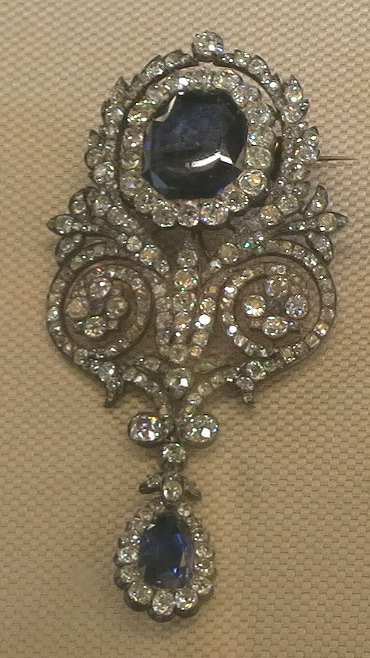 |
| Queen Marie-Amelie’s Diamond and Sapphire Brooch, on display at the Louvre (Wikimedia Commons) |
The large brooch from the set is a more elaborate version of the individual elements of the tiara, with a larger diamond surround hugging the top sapphire cluster, and a delicate sapphire cluster pendant.
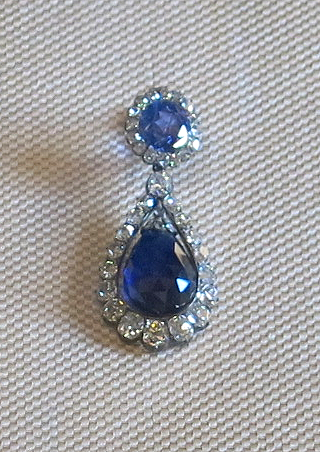 |
| One of Queen Marie-Amelie’s Diamond and Sapphire Earrings, on display at the Louvre (Wikimedia Commons) |
The earrings from the set have a lovely, simple design: a round sapphire cluster stud from which a sapphire briolette is suspended, set in a frame of diamonds.
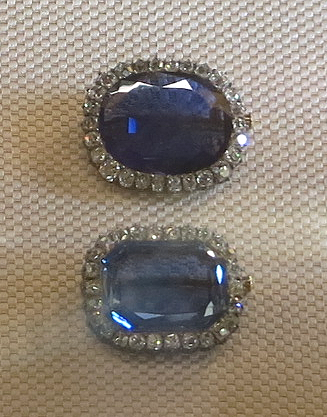 |
| Queen Marie-Amelie’s Diamond and Sapphire Cluster Brooches, on display at the Louvre (Wikimedia Commons) |
Two more large sapphire clusters are included in the set, each with a backing that allows them to be worn as brooches.
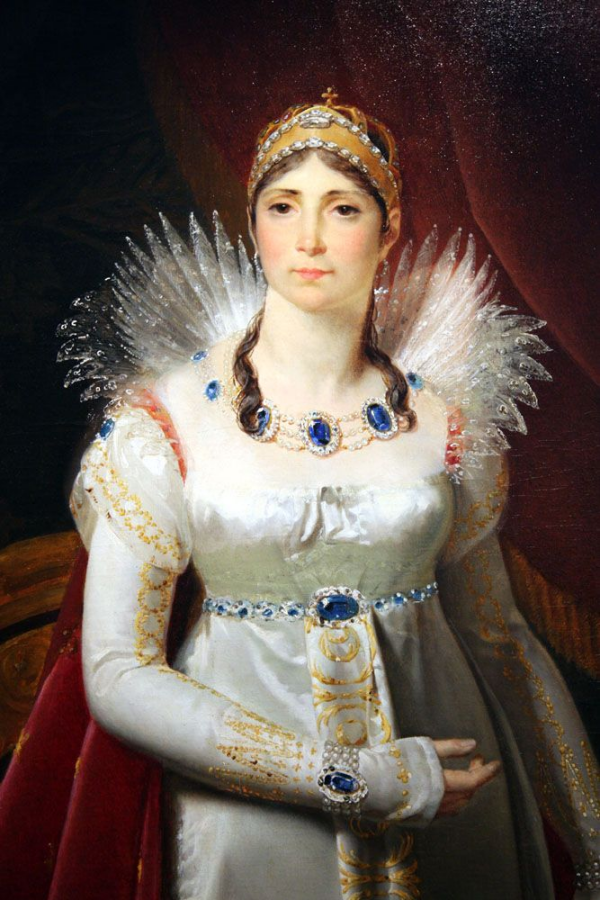 |
| Empress Josephine depicted wearing a suite of sapphire and diamond jewels, which may or may not be the same sapphires that her daughter, Hortense, sold to King Louis-Philippe |
The parure on display at the Louvre has a complicated history. It was originally part of a much larger parure, and it’s said that some of the sapphires may have originally belonged to Empress Josephine. Certainly by 1821, they were in the possession of her daughter, Hortense. That year, the Duke of Orleans (who became Louis-Philippe I, King of the French nine years later) purchased the sapphires from Hortense, and a letter from Louis-Phillipe to her regarding the sale still exists today. Louis-Philippe presented the sapphires to his wife, Marie-Amelie, who wore them as Queen of the French.
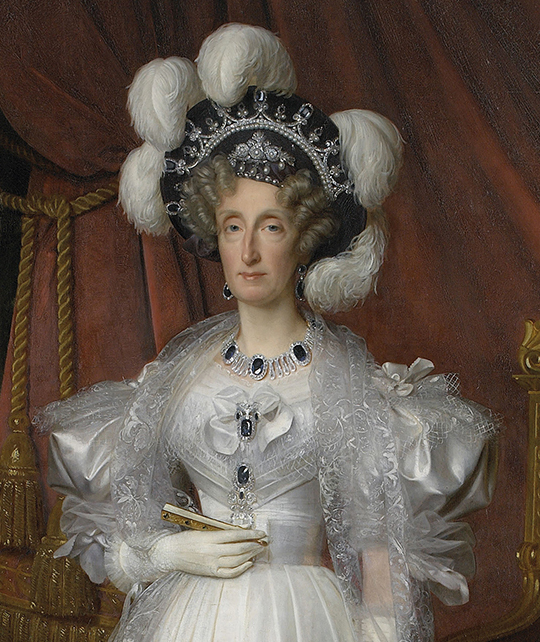 |
| Queen Marie-Amelie wears her sapphires in a portrait by Louis Hersent, ca. 1836 (Wikimedia Commons) |
Marie-Amelie wore her sapphires in a grand portrait painted in 1836 by Louis Hersent. (The portrait, which was commissioned by Marie-Amelie’s eldest daughter, Queen Louise of Belgium, now resides in the Palace of Versailles.) You’ll recognize the necklace, earrings, and brooches she wears. You’ll also note that the tiara worn here is not the same one on display today in the Louvre, and you’ll be correct. At some point between 1821 and 1836, Louis-Philippe and Marie-Amelie sent some of the pieces from Hortense’s sapphire set to Bapst to be reset.
Using jewels from the existing sapphire suite, the jewelers created a new tiara for Marie-Amelie to wear. This is the diamond, sapphire, and pearl tiara that she wears in the Hersent portrait. The Bapst tiara is simpler in design, featuring upright clusters placed on a diamond festoon base, which is set atop two rows of pearls. In this portrait, Marie-Amelie wears it on a dark backing embellished with ostrich feathers. Bapst essentially crafted an entire second set of sapphire jewels for Marie-Amelie; the tiara was accompanied by earrings and three brooches, all of which now include pearls in their settings, but still share the same scroll, floral, and wing designs with the parure that is now in the Louvre. We’ll distinguish between the two by simply referring to them here as the Bapst set and the Louvre set.
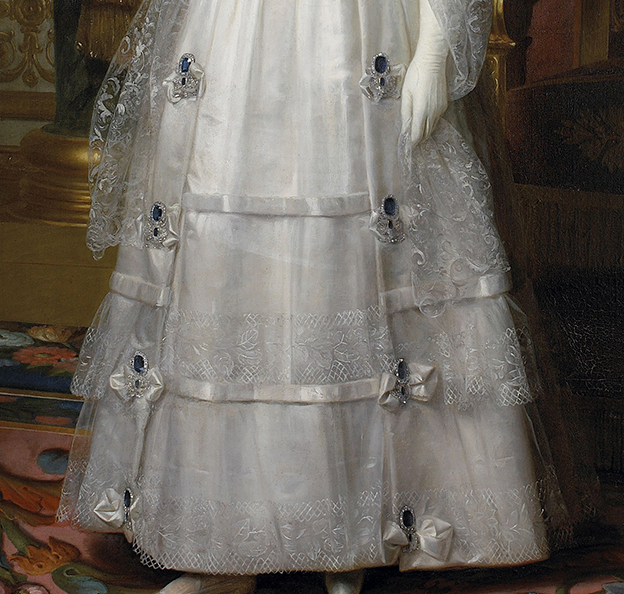 |
| Queen Marie-Amelie wears her sapphires in a portrait by Louis Hersent, ca. 1836 (Wikimedia Commons) |
So, in 1836, Marie-Amelie owned both the Louvre and Bapst sets, and the Bapst tiara is the one she wears in the famous portrait. But the tiara on display in the Louvre actually does make a sneaky appearance in the Hersent portrait. Here’s a look at the bottom half of the painting. Notice anything familiar about the brooches used to decorate the bows on Marie-Amelie’s gown?
They’re the same design as the individual elements of the Louvre tiara. At some point, several of the brooches from Hortense’s sapphire set — perhaps five of the eight brooches used to adorn her skirt in the portrait — were combined to make a second sapphire tiara, meaning that both the Louvre and Bapst sets were now complete parures with tiaras.
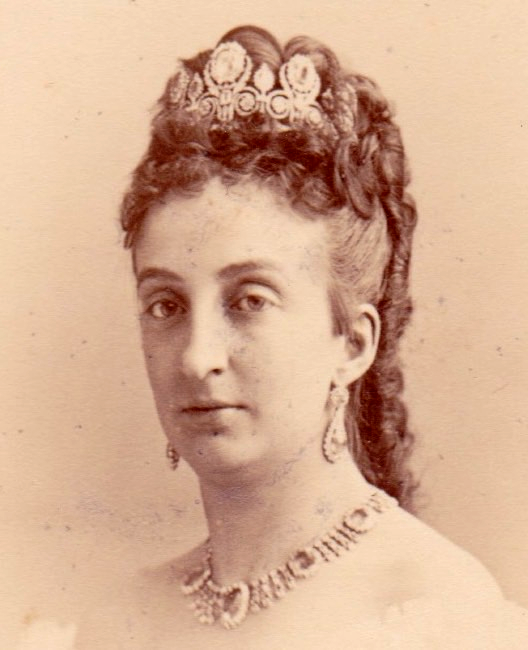 |
| Princess Marie Isabelle wears the tiara, earrings, and necklace from the sapphire parure that now resides in the Louvre |
Exactly when the Louvre tiara was created isn’t totally clear. But when Marie-Amelie died, the Louvre and Bapst sets were officially separated into two parures, and they were bequeathed to different descendants. The Bapst set, including its original case from the jeweler, was inherited by Marie-Amelie’s youngest son, Prince Antoine, Duke of Montpensier.
The Louvre set, on the other hand, was bequeathed to Marie-Amelie’s grandson, Prince Philippe, Count of Paris. (He was the eldest son of her eldest son, Prince Ferdinand Philippe, who had died in 1842.) But although the sapphires were inherited by different men, they ultimately ended up in the same place. That’s because — bear with me here — the Duke of Montpensier’s eldest daughter, Princess Marie Isabelle, married her cousin, the same Count of Paris who inherited the Louvre set. She’s depicted wearing the tiara from the Louvre set in the photograph above.
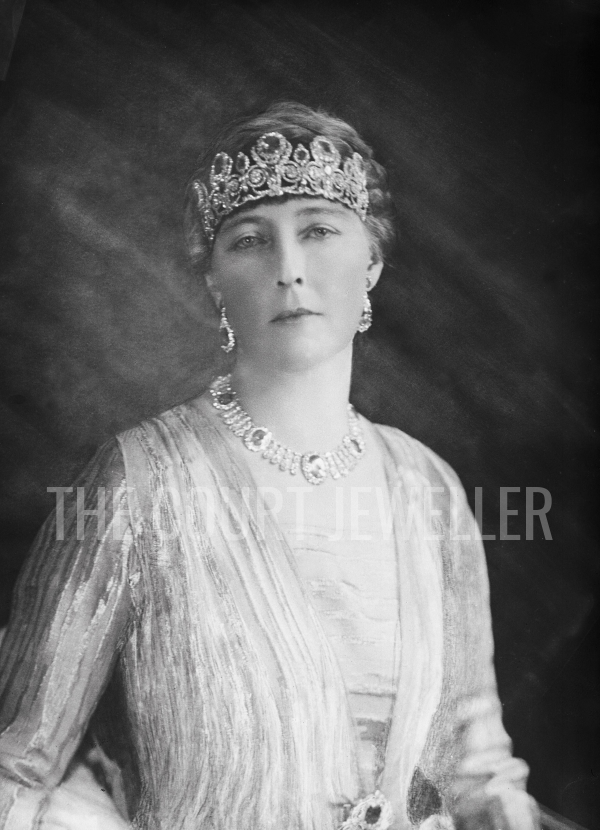 |
| Princess Isabelle, Duchess of Guise wears the sapphire parure that now resides in the Louvre (Image licensed to The Court Jeweller; do not reproduce) |
Both the Bapst and Louvre sapphire sets stayed in the family. Above, the Louvre set is worn in an early twentieth-century portrait by Princess Marie Isabelle’s granddaughter, Princess Isabelle, Duchess of Guise. She wears the tiara a la Josephine — low across her forehead in the bandeau style that, ironically, is named for the woman who may have been the original owner of the sapphires.
Both sets of sapphires were inherited by Isabelle’s eldest son, Prince Henri, Count of Paris. His wife, Princess Isabelle, Countess of Paris, was famously photographed wearing the Louvre set by Slim Aarons in 1956. Her daughter-in-law, the current Duchess of Montpensier, was photographed wearing the Bapst set. But Prince Henri made his way quite quickly through the family’s fortune, and in the end, both sets were sold. The Bapst set was sold in the 1990s to a private buyer, but luckily, the other diamond and sapphire parure was sold to the Louvre in 1985, where it can still be viewed and enjoyed by visitors today.
Leave a Reply